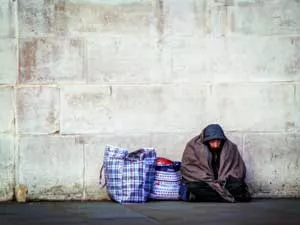
Filling the Gap: Fighting homelessness in Canadian cities
Alison Smith was a Masters student in 2008 when she took a volunteer position with a homeless shelter in east Vancouver. It was a decision that helped to set the course for her future research. “It was a time when homelessness was getting a lot of municipal attention,” Smith says. “My focus had been more international, but from that experience I started to focus on Canadian social policy and homelessness in large Canadian cities.”
Now an assistant professor of political science at U of T Mississauga, Smith’s current research focuses on homelessness and the role that local groups play in assisting the country’s most marginalized citizens.
In 2016, it was estimated that about 35,000 Canadians were homeless every night. Over the course of a year, about 235,000 people across the country will experience a period of homelessness, with about 150,000 people accessing emergency shelters at some point over the same period.

In her upcoming book, Filling the Gap: Cities and the Fight Against Homelessness in Canada, Smith traces the origins of the crisis, and the interconnected relationships between organizations stepping up to help at the local level. Smith compares the local responses in four Canadian cities—Vancouver, Calgary, Toronto and Montreal, where she heard from policy makers, police, elected officials, bureaucrats and shelter organizations.
“In the face of the federal policy shift, local actors came together to build networks, plans and strategies to respond to chronic homelessness,” she says. “But the balance of power is very different between those actors. In different cities, different groups—government and non-governmental groups, as well as private actors and civil society—produce protections for the chronically homeless.”
“I’m interested in why different governing models have formed around the issue of chronic homelessness, and how those models are structured by the local dynamics,” she says. “For example, the private sector in Calgary has enormous influence, sometimes even over local government, while that’s not the case in Toronto or Vancouver.”
“I wanted to document what was happening in these cities. Despite all of these efforts and dedication, the financial resources simply don’t exist to do the work to end chronic homelessness, however, there is incredible expertise and knowledge of what’s happening,” she says. “At the local level, there are actors with inadequate tools and resources, but a lot of gumption. They are stitching that safety net back together as well as they can. They need to be involved in policy implementation at the federal level and also in a multi-level governance approach.”
